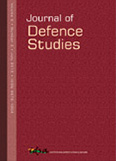The Darkening Web: The War for Cyberspace, by Alexander Klimburg
The introduction to Alexander Klimburg’s book, The Darkening Web: The War for Cyberspace, begins by referencing the Indian parable of the Blind Men of Hindoostan and the elephant to bring out the difficulty of ‘grasping the entirety of cyberspace’. The focus of his book is on international security, and more specifically, the security interests of states in cyberspace. That said, a large part of the book focuses on three countries—the United States, Russia and China—and their approaches and actions in cyberspace. Europe is mentioned largely in the context of privacy and data laws.
- Cherian Samuel |
- October 2017 |
- Journal of Defence Studies





